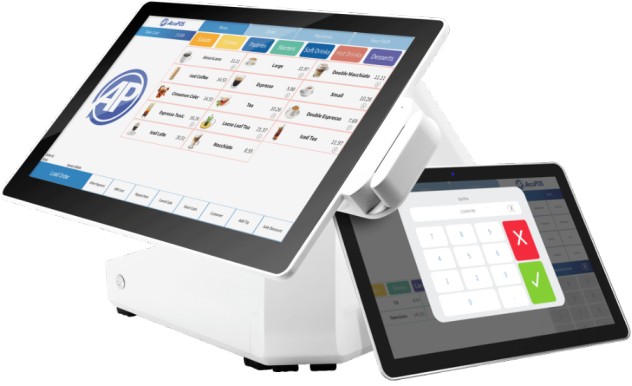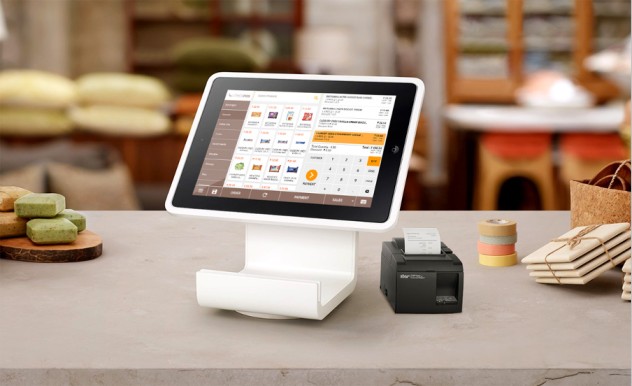Point of Sale (POS) software is a type of software that businesses use to manage and process transactions at the point of sale, typically in retail settings. POS software allows businesses to accept payments, track sales, manage inventory, and analyze customer data all in one place. It has become an essential tool for businesses of all sizes, as it enables them to streamline their operations and improve their overall efficiency.
POS software development will give you a product that can help your company. POS systems can also be linked to various types of equipment, including barcode scanners, cash registers, payment terminals, etc. In addition, to traditional brick-and-mortar stores, POS software has also become increasingly important in e-commerce and omnichannel retail, as businesses seek to integrate their online and offline sales channels. With the ability to provide real-time sales tracking, customer data analysis, and inventory management, POS software has become an essential component of modern business operations.
How POS Software Works and How It Is Useful
POS runs on special software and is used to automate and simplify the process of selling. It also includes a computer, monitor, cash register, barcode scanner, payment terminals, and other devices.
When making a sale, the platform processes product data, including name, price, quantity, and other information read from a barcode or manually entered. The system then issues an invoice, accepts payment through a terminal or cash register, and updates the data in the database.
POS is extremely useful because it helps streamline the sales process, reduce order processing time; minimize errors and lost merchandise, and simplify sales accounting and analysis. They also manage inventory, create reports, and analyze data to improve their efficiency and profitability. They are an important part of current operations and help improve the efficiency and profitability of companies.
Why Create a POS Software?
There are several reasons you should think about creating such software or selling it to other companies:
- Increased efficiency: it can help increase the efficiency of sales operations, reduce order processing time, and reduce the possibility of errors.
- Improved accounting and control: this allows for more accurate inventory, inventory control, and merchandise accounting, which can lead to reduced losses and better controls.
- Sales analysis: a collection of sales information that can be used for analysis to understand which products are in the highest demand and what actions can be taken.
- Expanded functionality: additional functions such as collecting customer information and marketing programs that can improve customer interactions.
- Flexibility and adaptability: allows businesses to create solutions tailored to specific company needs and changes.
Overall, it can improve efficiency and productivity, improve accounting and sales analysis, expand functionality, and create a more flexible and adaptive solution.
Types of POS Software and the Most Popular Examples.
There are several types of these platforms that can be used depending on a company’s needs and business model. Let’s take a look at some of the most popular options:
- PC-based: run on standard computers and include software and necessary equipment such as barcode scanners, cash drawers, receipt printers, etc. Examples: Square, Clover, Vend, Lightspeed.
- Mobile-based: run on smartphones and tablets, and include software and additional equipment such as barcode scanners, receipt printers, etc. Examples: Shopify POS, Toast, ShopKeep, Revel.
- Cloud-based: run on remote servers and are accessible via the internet, allowing users to manage sales and control from any location with internet access. Examples: Square, Lightspeed, Vend, Revel.
- Integrated: integrate with other applications such as accounting, inventory, loyalty programs, etc. Examples: Lightspeed Retail, Clover, Vend, Shopify POS.
- Mobile POS terminals: these are pocket-sized cash registers that are typically used in mobile commerce and allow you to accept payment on the spot. Examples: iZettle, Square Reader, SumUp, PayPal Here.
Depending on the needs, you can choose a suitable option that will help manage sales and improve control.
Process of POS Software Development
The nuances of project creation can be different and depend on the company and its needs. In general, the process includes the following stages:
- Analysis and planning: at this stage, needs and requirements are defined. After that, functionality, capabilities, architecture, and interface should be determined.
- Design and prototyping: at this stage, a design and a prototype of the system are created which can be used to test its functionality and interaction with the user.
- Development: at this stage, the actual creation of the program code and functionality testing takes place.
- Testing and debugging: once completed, it is tested and debugged to identify bugs and flaws that can be corrected before release.
- Release and deployment: after successful testing, the product is ready for release and deployment into the company. It is important to train employees so that they can effectively use the new system.
- Support and updates: after the release, the project requires support and regular updates to make sure that it is up and running and meets the changing needs of the company.
The process can take anywhere from a few months to several years, depending on the complexity of the system and its functionality.
The Must-have Features of POS Software
There are several must-have features that will make your POS software functional and usable:
- Sales: the ability to manage sales, including quick access to pricing, inventory, sales history, and other important data.
- Inventory: including item quantity tracking, item availability, shortage notifications, etc.
- Customer: including records of purchase history, returns, discounts, and other loyalty privileges.
- Payment processing, including accepting payments through various channels such as credit cards, cash, mobile payments, etc.
- Personnel including task assignment, timekeeping, access control, etc.
- Statistics of sales, customer, and inventory, including the creation of reports on sales, marketing promotions, and other aspects.
- Use mobile devices such as smartphones and tablets for flexibility and mobility when working.
- Integration, such as accounting and CRM, for more effective controls.
These functionalities are key to efficient operations and can greatly improve performance.
What Does the Cost of POS Software Consist of and What Can It Depend on?
The cost depends on many factors. For example:
- Functionality: the amount and complexity of functionality to be implemented.
- Integration of external modules.
- Design and user interface: if a custom design and interface are required, this can affect the cost of the work.
- Platform and technology: a project for mobile devices may be more expensive than one for desktops.
- Level of complexity: a platform for a restaurant may be less expensive than for a large retail chain.
- Region: work may be more expensive in regions with high standards of living and higher rates.
- Level of experience and qualifications: more qualified professionals can provide higher quality work, but the price will be higher.
Overall, the cost can range from a few thousand to several million dollars, depending on the above factors.

Conclusion
In conclusion, the importance of POS (point of sale) software in modern business cannot be overstated. The days of manual record-keeping and cash-only transactions are long gone, and businesses that fail to adopt digital POS systems risk falling behind their competitors. With features like real-time sales tracking, inventory management, and customer data collection, POS software enables businesses to streamline their operations, make data-driven decisions, and improve their overall efficiency.
Moreover, with the increasing popularity of e-commerce and omnichannel retail, POS software has become an essential tool for businesses looking to integrate their brick-and-mortar operations with online sales. Overall, the implementation of POS software is a critical step for any business that wants to stay competitive in today’s fast-paced digital landscape.






![YouTube SEO in 2024 [Definitive Guide]](https://getpixie.com/wp-content/uploads/2024/02/shutterstock_1684828252-1-150x150.jpg)








